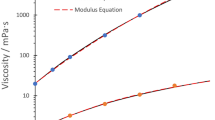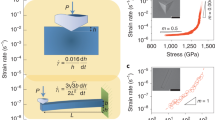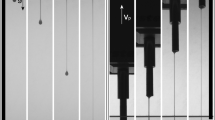Abstract
ALTHOUGH the Berthelot tube method of subjecting a liquid to tension has been used intermittently for several years, there is no published theory which enables us to calculate the value of the tension at any stage before the breaking, that is, rupture of the enclosed liquid. We present here such a theory, giving good agreement with the experimental values of the tension obtained directly using a transducer method. In the past, two theories of the method have been given but these only enable us to calculate values of the breaking tension; first, the theory of Vincent and Simmonds (method 1), which we shall show to contain a serious error and second, that of Temperley and Chambers (method 2). These two methods have been discussed by Chapman et al.1.
This is a preview of subscription content, access via your institution
Access options
Subscribe to this journal
Receive 51 print issues and online access
$199.00 per year
only $3.90 per issue
Buy this article
- Purchase on Springer Link
- Instant access to full article PDF
Prices may be subject to local taxes which are calculated during checkout
Similar content being viewed by others
References
Chapman, P. J., Richards, B. E. & Trevena, D. H. J. Phys. E 8, 731–735 (1975).
Richards, B. E. & Trevena, D. H. J. Phys. D 9, L123–126 (1976).
Author information
Authors and Affiliations
Rights and permissions
About this article
Cite this article
WILLIAMS, T., TREVENA, D. Improved and extended theory of the Berthelot tube method of studying liquids under tensile stress. Nature 265, 612–613 (1977). https://doi.org/10.1038/265612a0
Received:
Accepted:
Issue Date:
DOI: https://doi.org/10.1038/265612a0
Comments
By submitting a comment you agree to abide by our Terms and Community Guidelines. If you find something abusive or that does not comply with our terms or guidelines please flag it as inappropriate.



